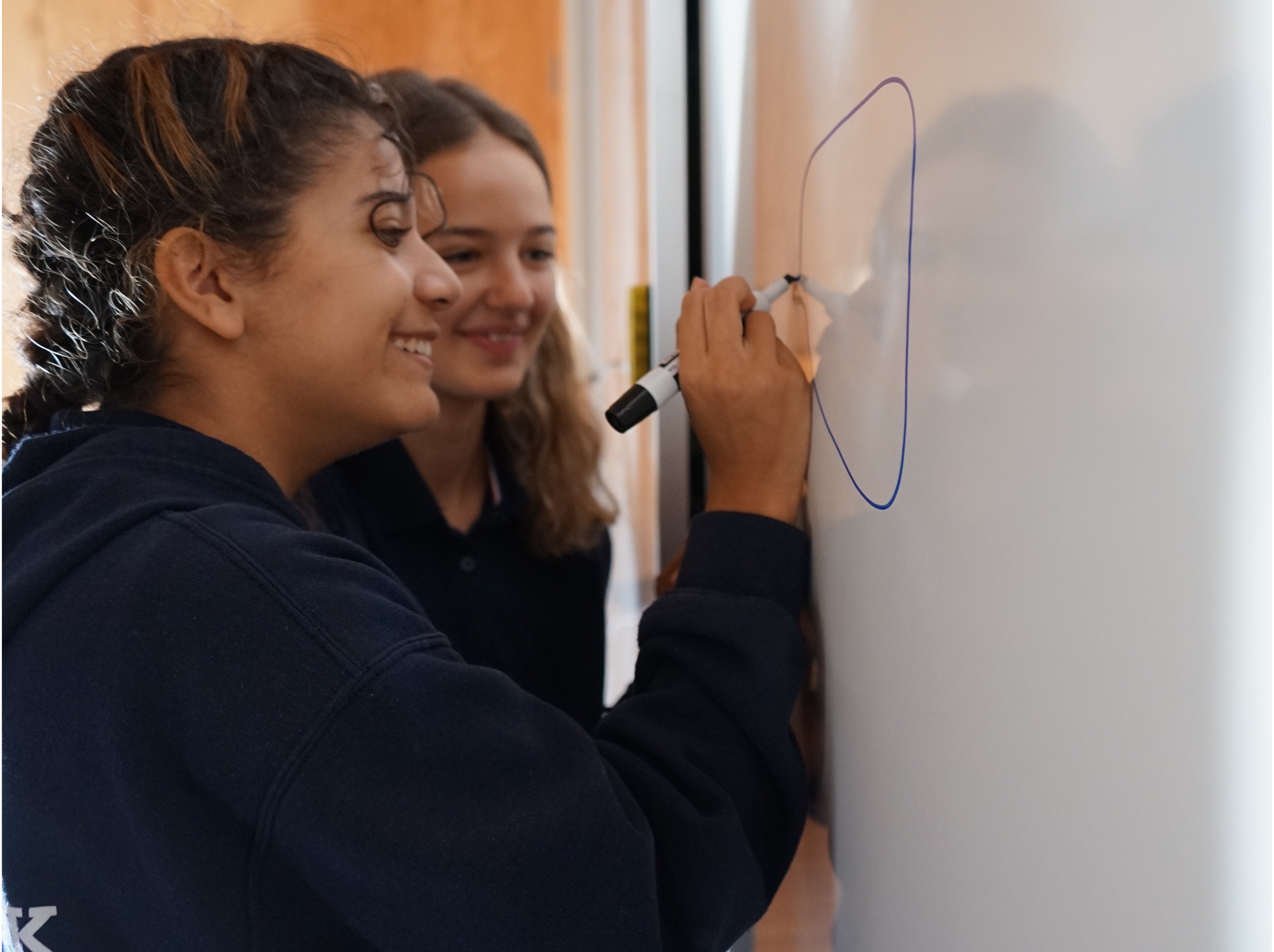“X” MARKS THE SPOT: 7TH GRADERS STRATEGIZE, SIMPLIFY, AND SOLVE IN ALGEBRA CLASS
7th Grade mathematicians are studying algebra, manipulating equations, solving for x, and working with partners to compare strategies. In 7 Standard class, students this week were working on problems like: “Which of the following is the same as x-3=2-4x? A) 2x-6=4-8x B) x-5=4x C) 2(1-2x)=x-3 or D) -3=2-5x?” In partners, at whiteboards throughout the room, students worked to balance and simplify equations, talking about their strategies and borrowing ideas from others’ whiteboards. In addition to solving and comparing their own solutions to problems like these, they worked on understanding a fictional student’s work, tracing another’s reasoning through correct and incorrect pathways to find errors or confirm their findings. These ways of interacting with problems build the fluency needed for their upcoming work solving inequalities and representing those solutions graphically. In the 7 Intensive class, students are also working on linear functions, using both their 7 Accelerated Illustrative Math textbook (which both classes work from) as well as the Integrated Math Exeter Problem Sets. This week, for example, Intensive students were manipulating and solving algebraic equations with inequalities and using systems of equations, like, “if 0.1x+0.25y=17.10 and 102-x=y solve for x.” In solving the problems for homework, then presenting their solutions the next day, students found that some had solved it by substitution and others graphically (creating two y=mx+b equations, graphing them online and finding their intersection). In another set of equations about an unknown quantity of quarters and dimes, students found some had graphed it, some had rewritten all the quantities in terms of cents, and others had written new equations to substitute, based on the fractional relative value of the coins.
I used to go to my parents early in the year for help and I stopped because whenever there was a money problem, I converted it to cents and they didn’t.
Students reflected aloud in discussion, “I think converting in general is a personal thing, you could make it into cents but you could also say you know one quarter is 1/4 and one dime is 1/10. So you could do cents or you could write it in fractions you already know.”
Another shared, “I used to go to my parents early in the year for help and I stopped because whenever there was a money problem, I converted it to cents and they didn’t. And it was easier to do it my way for me…”
Students then worked on a Desmos task, writing an equation to represent the speed of a turtle in a race then following its progress through an animation. Because the turtle is designed to literally follow your speed equation, some students inadvertently created two turtles (e.g. including multiple outputs for the same input) or made it appear to do a little dance. Delighting in this programming was joyful and also a chance to solidify their learning about the relationship between a function, its graph, and the story context.

